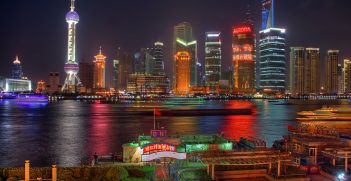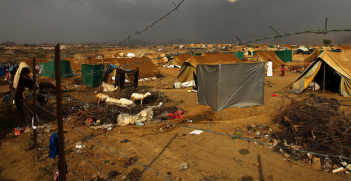The 1971 South Asia Crisis

26 March is officially known as Bangladesh Independence Day. This marks the day in 1971 on which Sheikh Mujibur Rahman, about to be arrested by the Pakistan Army, got a message out through a clandestine radio station declaring independence and the final break with Pakistan. However, real independence did not come to Bangladesh until mid-December, when Pakistan’s army surrendered to India’s in Dhaka after a short war.
In December 1970, Pakistan’s military ruler, General Yahya Khan, had brought on an election for a constitutional assembly that was intended to pave the way for his country’s return to a form of civilian rule. The Awami League, led by Mujib, had won 160 of the 162 seats contested in East Pakistan, thus eclipsing the 82 seats won by Zulfiqur Ali Bhutto in the West and giving it a majority in the proposed assembly. But Yahya and Bhutto were adamant that East Pakistan would not be allowed to dominate the assembly, while Mujib insisted that the result entitled East Pakistan to a large degree of autonomy.
Negotiations in Dhaka broke down on 25 March 1971 when Yahya returned to Islamabad and authorised his army to launch a bloody crackdown against the Awami League and its supporters in East Pakistan. The resulting tragedy saw some 300,000 Bengalis killed and 10 million flee into India in just seven months.
If this disaster is largely forgotten outside the sub-continent, so too the perfidies of American policy during the crisis tend to be airbrushed from history. Washington, sceptical about India’s non-alignment and its relationship with the Soviet Union, had long been closer to Pakistan. As revealed in his tapes, President Nixon had developed a personal antipathy towards India and its leaders. His National Security Adviser, Henry Kissinger, seems to have urged him on.
Beyond this though, in the first half of 1971, Washington in effect became hostage to Yahya Khan. This was the channel to Beijing, for setting up the “secret” visit that Kissinger was to make in July of that year. Once the breakthrough with China was announced in July, Nixon and Kissinger took the view that the US’ credentials as a friend needed to be proven through continued loyalty to Pakistan. Consequently, India hastily concluded a treaty with the Soviet Union. Thus, what was essentially a regional issue became another chapter in the Cold War.
As the Pakistan Army continued its crackdown in East Pakistan, drawing on US-supplied arms and ammunition, the US Consul General in Dhaka (Archer Blood) characterised the Pakistani actions as “genocide”, filed a “Policy Dissent” report (the “Blood Telegram”) arguing against US complicity in the tragedy, and was duly removed from his post. The State Department was not comfortable, but Kissinger saw its objections to continued US arms supplies as “traitorous”.
India became increasingly concerned as the burden of the refugees flowing across its borders grew. However, with nation states deeply nervous about support for secessionist movements and the concept of “responsibility to protect” still 30 years away, its appeals to the international community to lean harder on Pakistan to reach a political solution in the East went largely unheeded.
India’s security forces steadily increased their support for the Mukti Fauz in East Pakistan. Eventually, on 3 December, the simmering conflict on the India-East Pakistan border broke into open warfare.
A week into the war, Kissinger asked the Chinese to undertake military manoeuvres in the Himalayas with the aim of distracting India’s forces, but Beijing declined. Indian Prime Minister Indira Gandhi had foreseen that China would not want to get involved, but Nixon and Kissinger had miscalculated. Disappointed, Nixon ordered the USS Enterprise task force into the Bay of Bengal, supposedly to position it for a possible evacuation of American citizens from East Pakistan. In fact – as Kissinger later acknowledged – this was to dissuade India from carrying the war into West Pakistan, a course which in fact it never intended taking.
In addition to astonishing most observers – not least those of us in the Australian High Commission in New Delhi – and contributing to a lasting distrust of the US, this attempted intimidation led India to conclude that in order to regain its cherished capacity for “strategic autonomy”, rather than remain shackled to Moscow, it should accelerate its nuclear arms program. As a result, it conducted its first nuclear test in 1974.
Australia meanwhile provided a relatively generous flow of aid to refugees in India. Prime Minister McMahon wrote to Yahya Khan to press for a political solution the East; the Ambassador in Washington, Plimsoll, urged constrain on the US; and Foreign Affairs Secretary Waller, in official correspondence, described the Enterprise deployment as “an act of egregious stupidity.”
In short, Australia’s conservative coalition government adopted a policy different from that of the United States, and one that was more pro-Indian and pro-Bengali than most western nations. Why so?
For Australia, absent the geo-political complications that shaped US policy, the issue was straightforward. As early as February 1971, the Department of Foreign Affairs had assessed that the separation of East Pakistan from West was “nigh inevitable” and the Pakistani atrocities were well reported in Australia. It was thus for Canberra a rare instance on which realpolitik and morality coincided.
While Australian policy in regard to the sub-continent had long been underpinned by a cautious doctrine of “even-handedness”, a number of those advising the McMahon Government took the view that in the long term Australia’s interests lay more with New Delhi than with maintaining a “delicate balance” with Islamabad. Beyond this, it seems that McMahon himself saw the East Pakistan issue as an opportunity to put up an appearance of independence.
In January 1972, Australia became the first non-Eastern bloc government to recognise the new state of Bangladesh, and more than a year later was still arguing with Beijing about the need for China to recognise the fledgling state.
Anatol Lieven’s pithy summary incomparably captures the tragedy of 1971: “No freak of history like united Pakistan, its two ethnically and culturally very different wings separated by 1,000 miles of India, could possibly have lasted for long … The tragedy is not that it failed, but that a situation made for a civilised divorce should instead have ended in horrible bloodshed.” Nor of course did its end need to involve the risk of super power conflict.
But for Australia at least, this was one we got right.
Ric Smith is a Fellow of the AIIA and former diplomat who served in New Delhi, Manila, Tel Aviv and as ambassador to China. He was also Secretary of the Department of Defence and Deputy Secretary of the Department of Foreign Affairs and Trade. This article draws on his remarks at the ANU National Security College-Observer Research Foundation Australia-India Policy Forum in New Delhi on 28 February. It is published under a Creative Commons Licence and may be republished with attribution.





